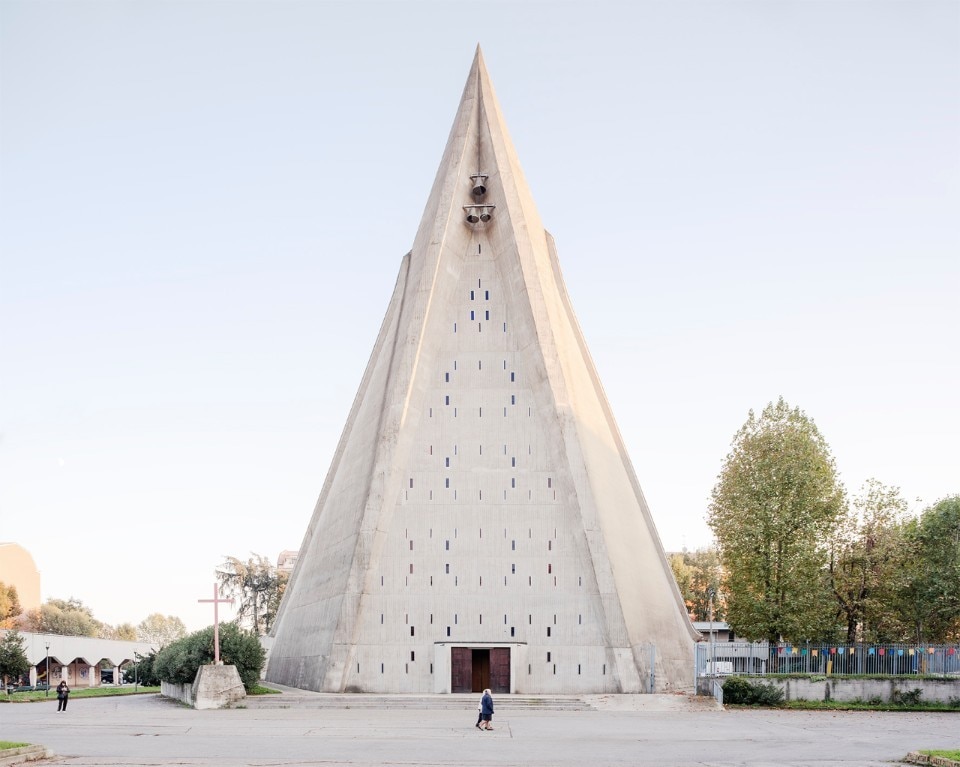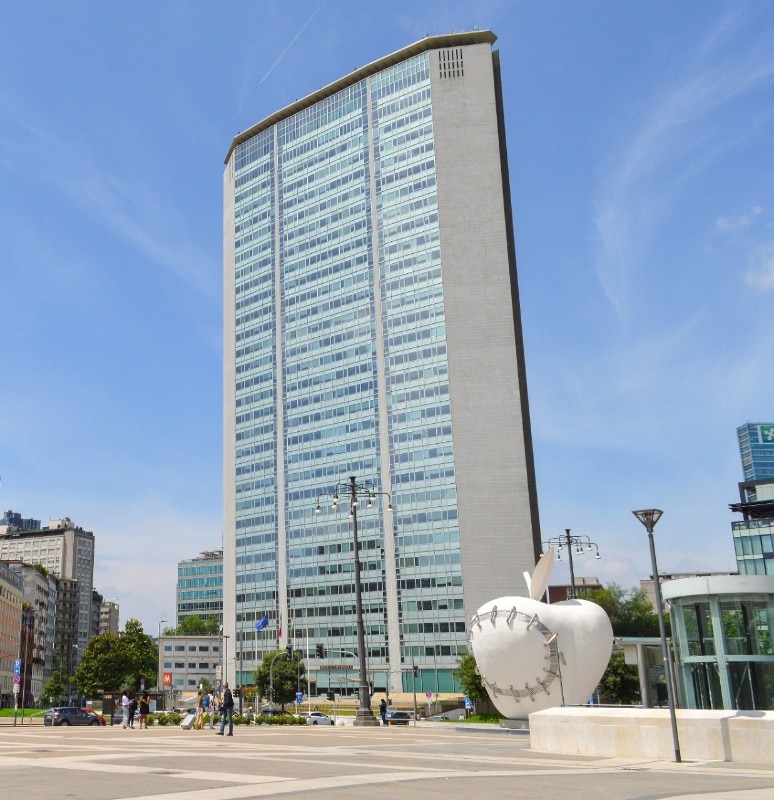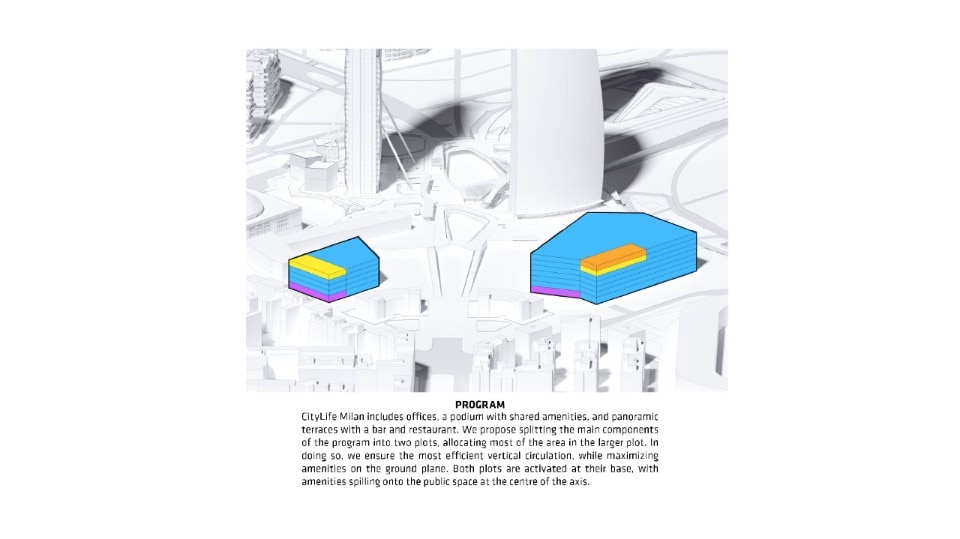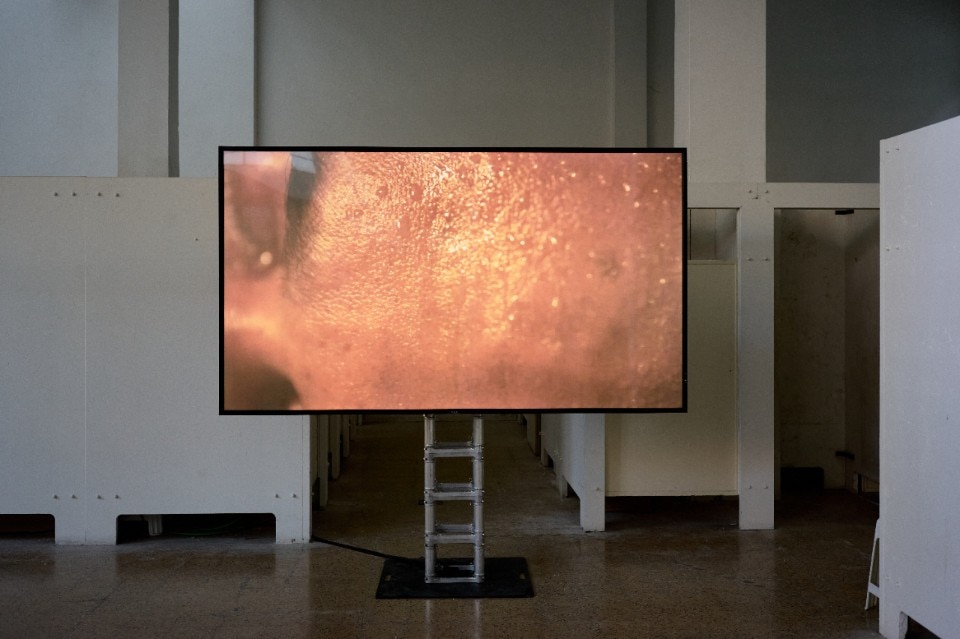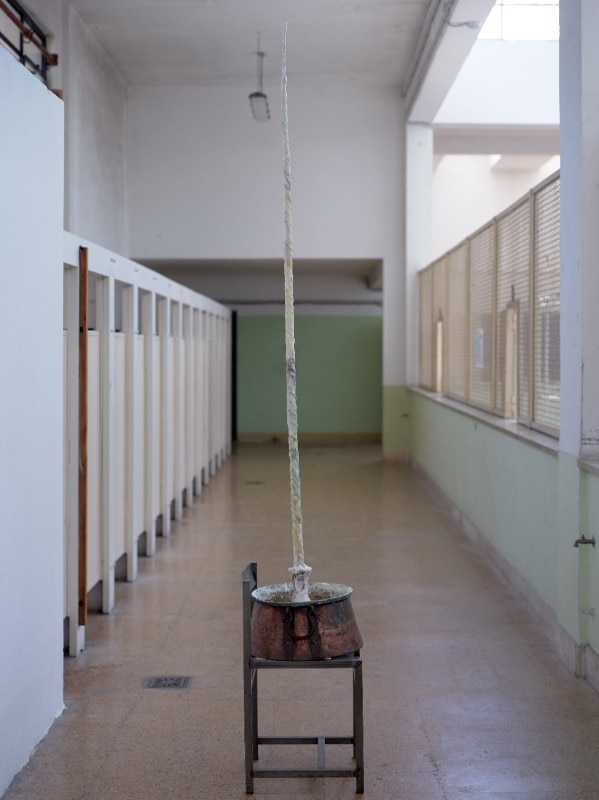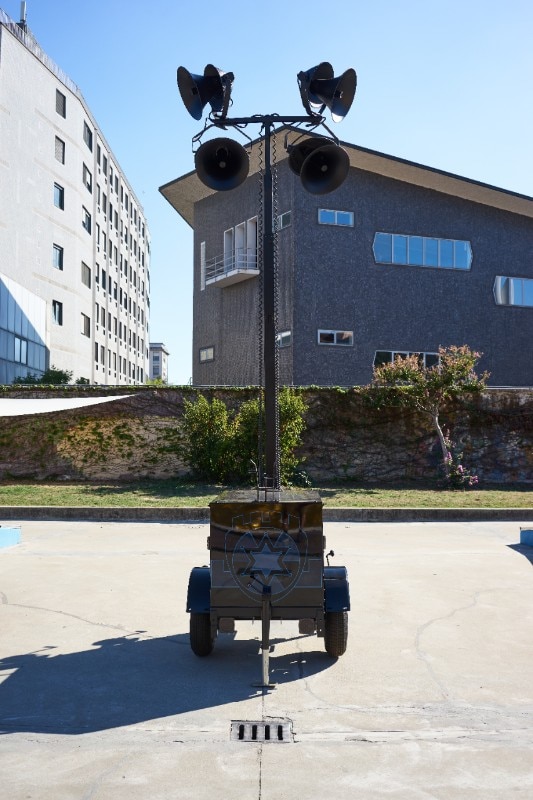The Duomo and Villa Necchi, Castello Sforzesco and the Torre Velasca: Milan’s “essentials” in ten buildings. It’s a nearly impossible list to compile. The one published by the New York Times certainly helped narrow it down, featuring all the great classics (and a few unexpected picks from the outskirts, like Villa Borsani). But as with any “greatest hits,” that list couldn’t please everyone. We believe there’s room for a selection that’s less about tourism and more about architecture – one that captures Milan’s history by shedding light on some of its less known facets.
To live in Milan today is to inhabit a layered – and often intricate – product of many eras and overlapping stories and histories, rather than a uniform urban fabric dominated by a few landmarks. These stories are often fragmented and even contradictory, but together they make Milan unique. As we move through the city, we encounter the Renaissance and, at the same time – sometimes in the same place – a Modernism that is entirely its own: houses by Caccia Dominioni and Gio Ponti, for instance, and yes, landmarks, like Vico Magistretti’s Torre al Parco.
This selection isn’t meant to be definitive; in fact, we hope it will spark many more lists, starting with yours.
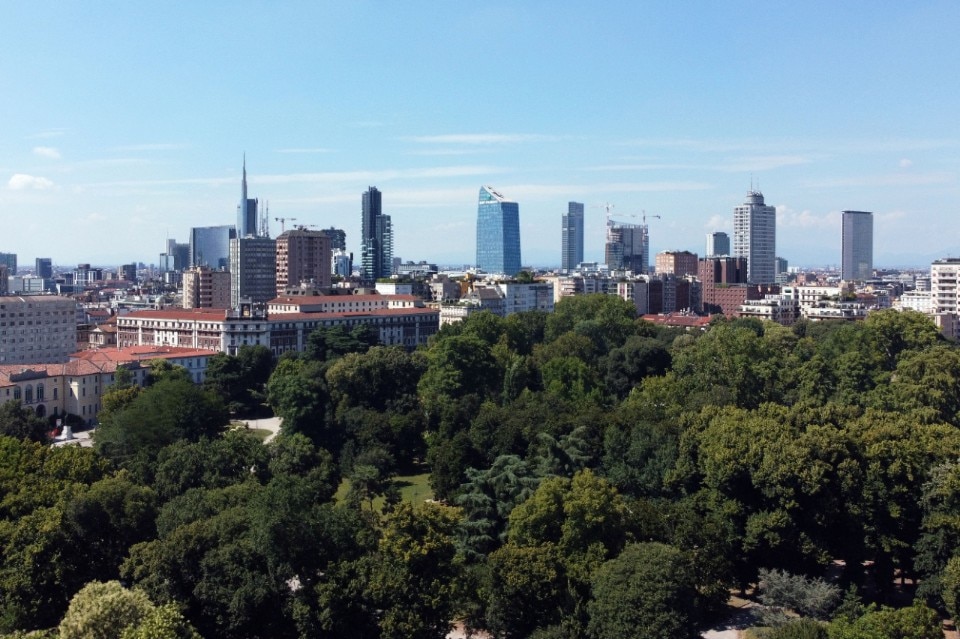
Right across from it, Giovanni Muzio’s Palazzo dell’Arte for the Triennale shows us just how forward-thinking Milan could be, envisioning underground spaces and spaces for music within an arts venue. Then comes brutalist Milan – always fluctuating between obscurity and renewed fame. And then another Milan, chasing after nature, whether in abbeys nestled in countryside surprisingly close to the city center, or in swimming pools that disrupt the dense urban sprawl.
Condensing all of Milan into just ten architectural works may be impossible – but we gave it a shot. Because the city of Domus is not defined by the Castello, the Duomo, or BBPR alone. We’re also convinced that anyone who calls Milan home – be it by birth or by choice – has their own personal list of architectural landmarks. This selection isn’t meant to be definitive; in fact, we hope it will spark many more lists, starting with yours.
1. Biblioteca Pinacoteca Accademia Ambrosiana
Francesco Maria Richini, Fabio Mangone and Giacomo Moraglia, 1609
Piazza Pio XI, 2, Milan, Italy
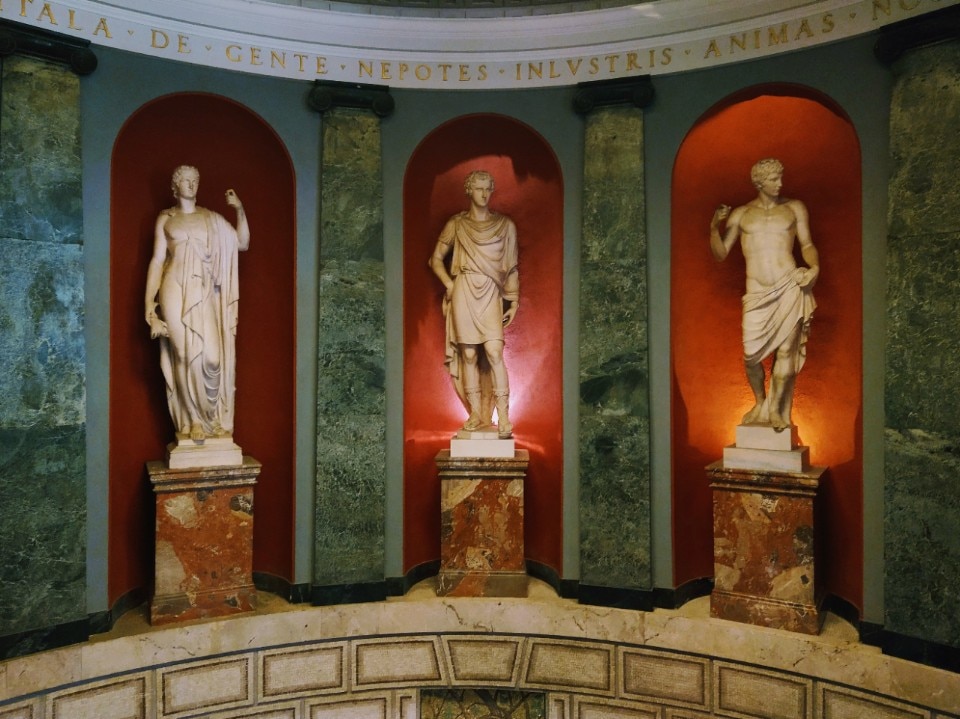
In the heart of the city, just steps from the Duomo and built on the site of the ancient Roman forum – whose paving can still be visited in the underground spaces – Cardinal Federico Borromeo began construction in 1609 of a palace to house one of Milan’s most important cultural institutions. Within its walls: an Academy, a paintings gallery (pinacoteca), and a library that Galileo Galilei would soon call “l’eroica et immortal libreria” (the heroic and immortal library). At its founding, it held 30,000 printed volumes and 8,000 manuscripts from across the globe, including Piero della Francesca’s “De Prospectiva Pingendi” and Leonardo da Vinci’s notebooks. The great Sala Federiciana, with its two tiers of wooden bookshelves and barrel-vaulted ceiling, is nearly as iconic as Cardinal Settala’s “Wunderkammer” or Caravaggio’s Basket of Fruit, shown in the gallery.
2. Grattacielo Pirelli (Pirelli Tower)
Gio Ponti, Pier Luigi Nervi, Alberto Rosselli, Egidio Dell'Orto, Antonio Fornaroli, Giuseppe Valtolina, 1956-1960
Via Fabio Filzi, 22, Piazza Duca d'Aosta, 5-7A, Milan, Italy
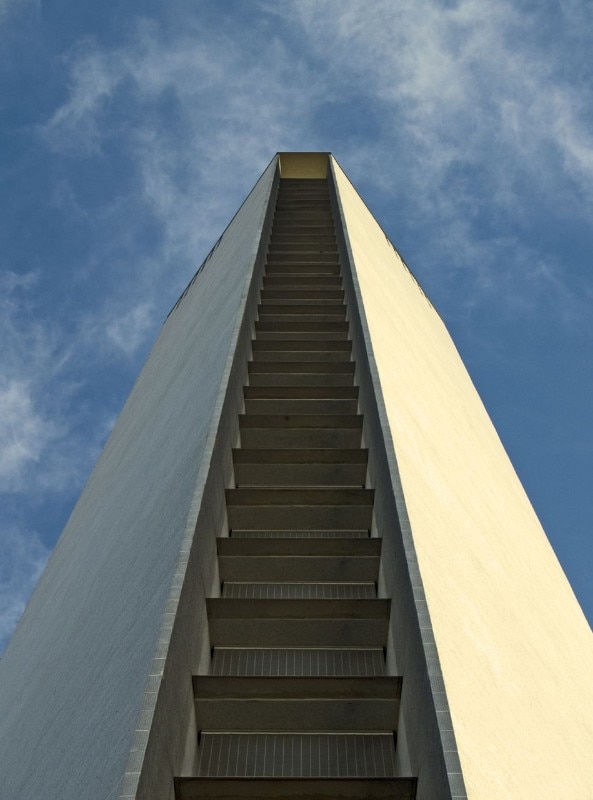
Designed in collaboration with Alberto Rosselli and Antonio Fornaroli – with structural engineering by Pier Luigi Nervi and Arturo Danusso – the Pirelli Tower by Gio Ponti stood for nearly 80 years as Milan’s tallest building. It became a symbol of a modern, growing city, its striking presence even inspiring iconic films such as Antonioni’s La Notte. Soaring over 127 meters, the building seems to embody Ponti’s own idea that “architecture is a crystal”. This notion is reflected in the sharply tapered ends carved by full-height “scuretto”, and in the roof slab, visibly detached from the building’s main volume. Since 1978, it has housed the offices of the Lombardy Regional Government.
3. Citylife skyscrapers
Arata Isozaki, Zaha Hadid, Daniel Libeskind, Bjarke Ingels, 2015 – ongoing
Piazza Tre Torri, Citylife, Mucipio 8, Milan, Italy
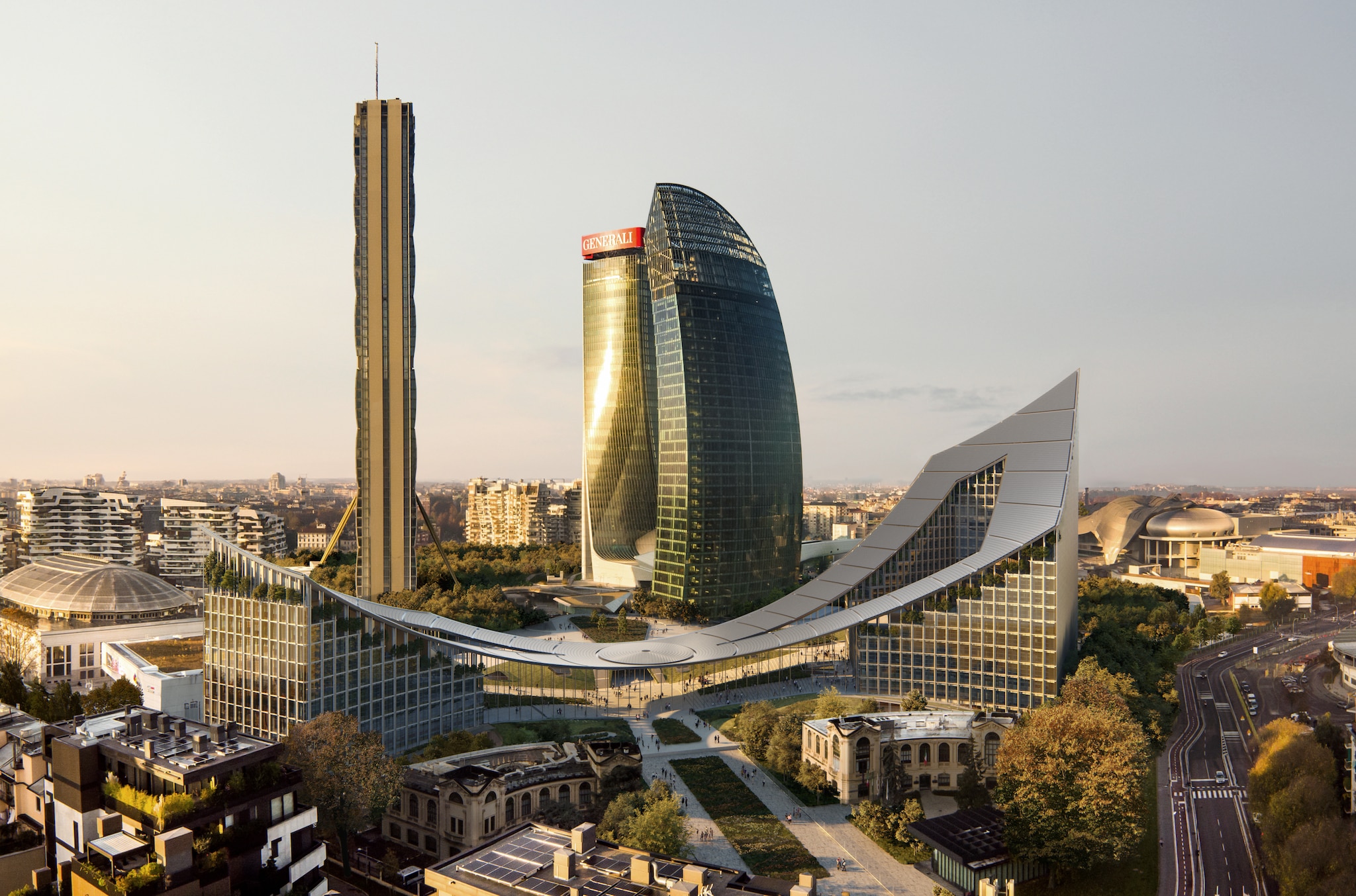
 View gallery
View gallery
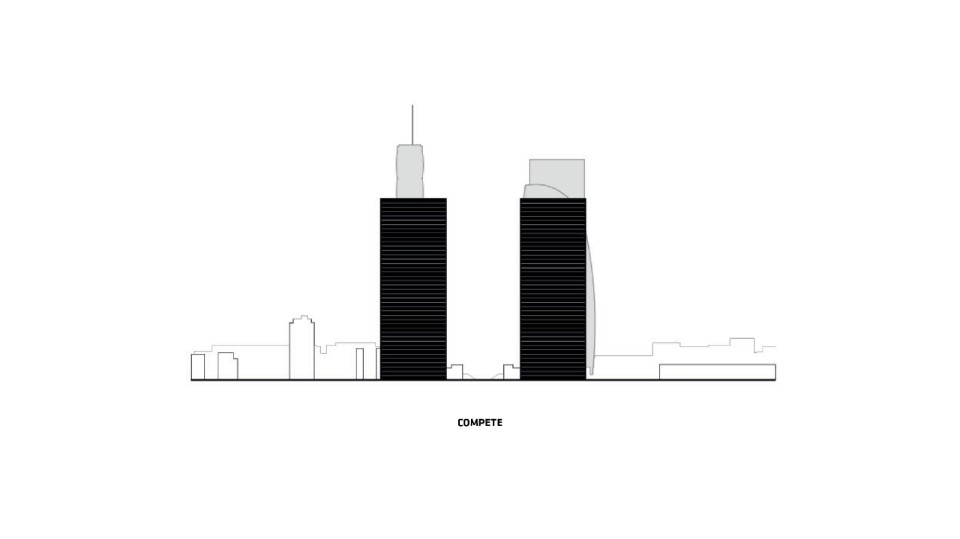
BIG-Bjarke Ingels Group, CityWave, Milano, Italia, ongoing
Renderings Beauty and the Bit

BIG-Bjarke Ingels Group, CityWave, Milano, Italy, ongoing
Renderings Beauty and the Bit

BIG-Bjarke Ingels Group, CityWave, Milano, Italia, ongoing
Renderings Beauty and the Bit

BIG-Bjarke Ingels Group, CityWave, Milano, Italy, ongoing
Renderings Beauty and the Bit
CityLife represents one of the largest urban redevelopment projects within Milan’s existing fabric – alongside those in Porta Nuova and the still-developing Porta Romana district. The site once belonged to Milan’s first trade fair complex, which was relocated to Rho in the early 2000s. In its place came new residential and commercial buildings, a new green space, and a cluster of landmark towers – each with its own nickname. The “Dritto” (Straight) is the Allianz Tower by Arata Isozaki and Andrea Maffei (2015); the “Storto” (Twisted) is the Generali Tower by Zaha Hadid Architects (2019); and the “Curvo” (Curved) is the PwC Tower by Daniel Libeskind. Soon to join them is the “Sdraiato” (Reclining) – CityWave, designed by BIG – Bjarke Ingels Group – which will serve with its horizontal development as a gateway to this new piece of Milan.
4. Piscina Guido Romano
Luigi Lorenzo Secchi, 1929
Via Giuseppe Zanoia, 2, Milan, Italy
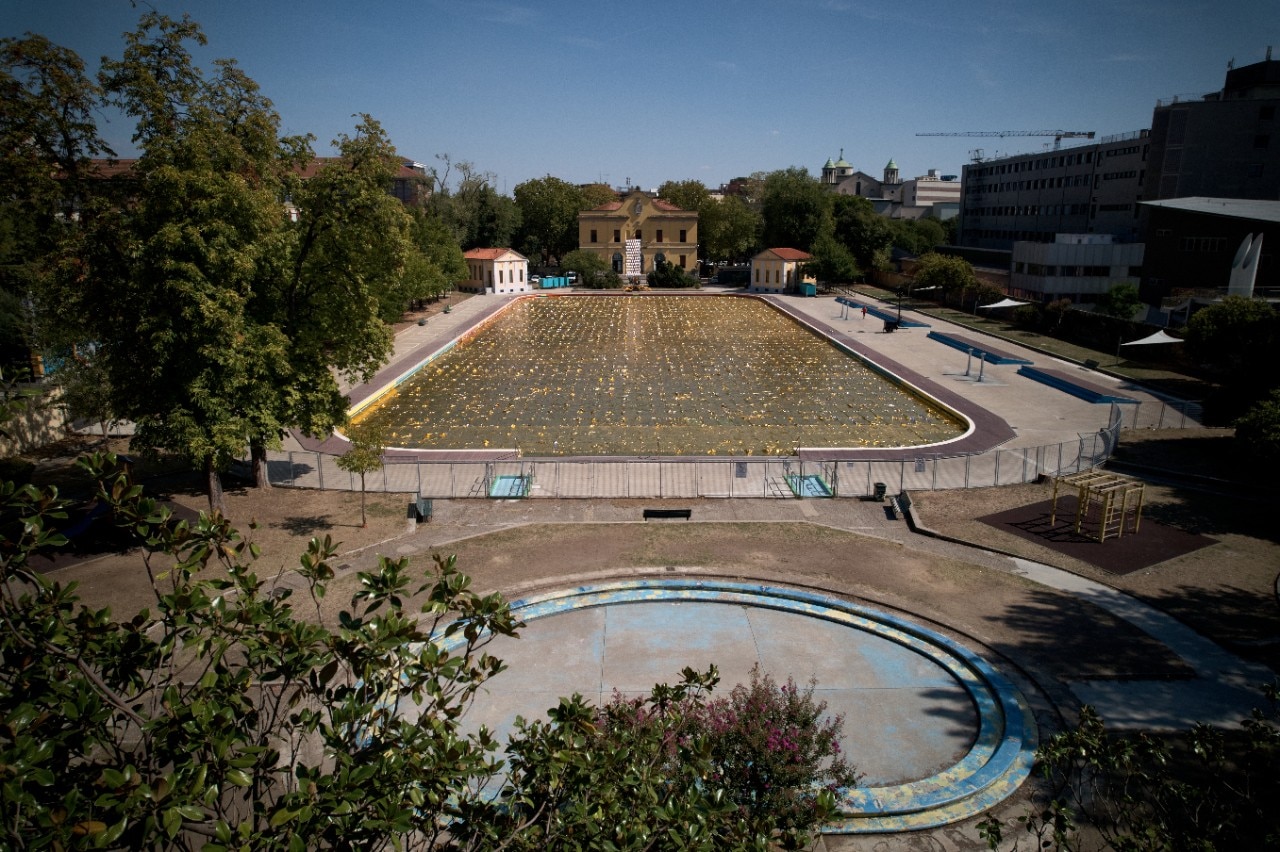
 View gallery
View gallery
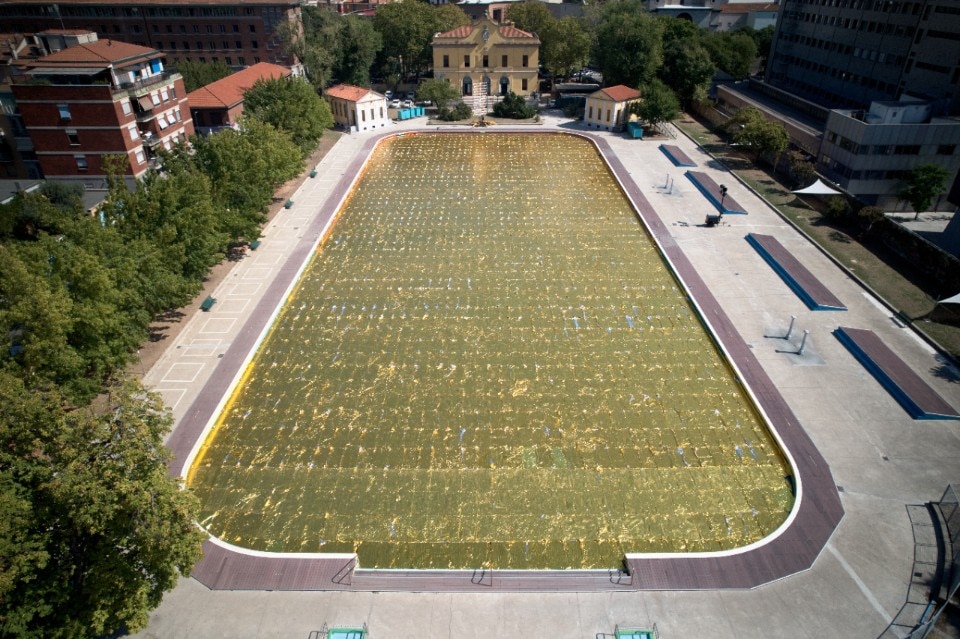
Gilded Darkness, Nari Ward, Fondazione Trussardi, 2022
Emergence Pool
Photo Marco De Scalzi
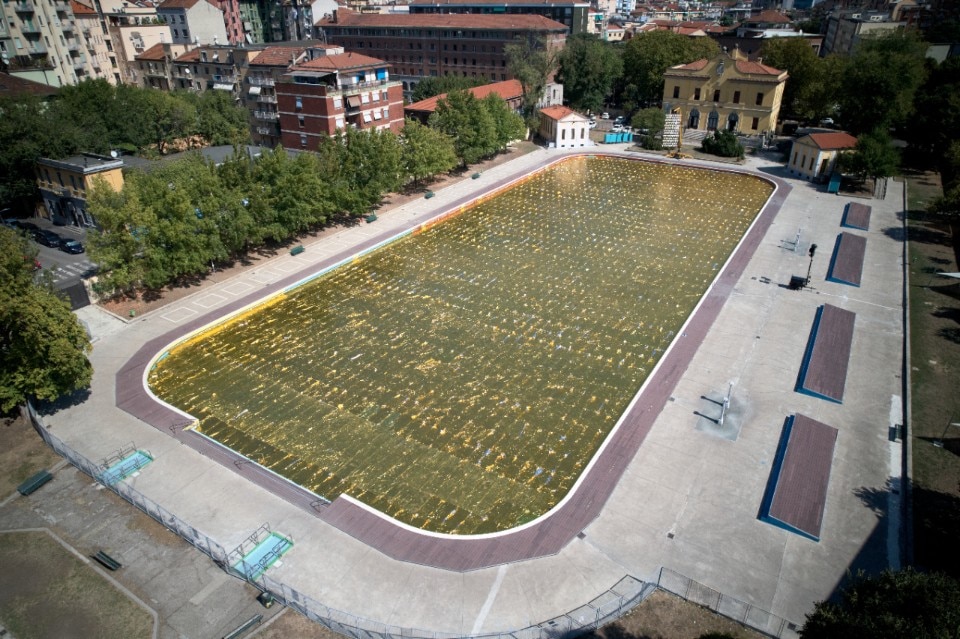
Gilded Darkness, Nari Ward, Fondazione Trussardi, 2022
Emergence Pool
Photo Marco De Scalzi
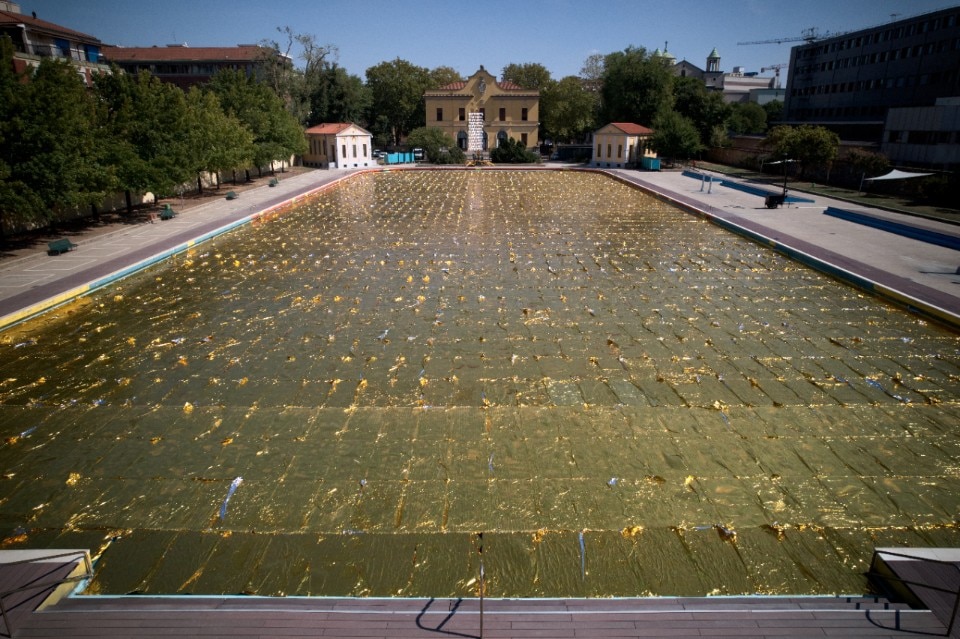
Gilded Darkness, Nari Ward, Fondazione Trussardi, 2022
Emergence Pool
Photo Marco De Scalzi
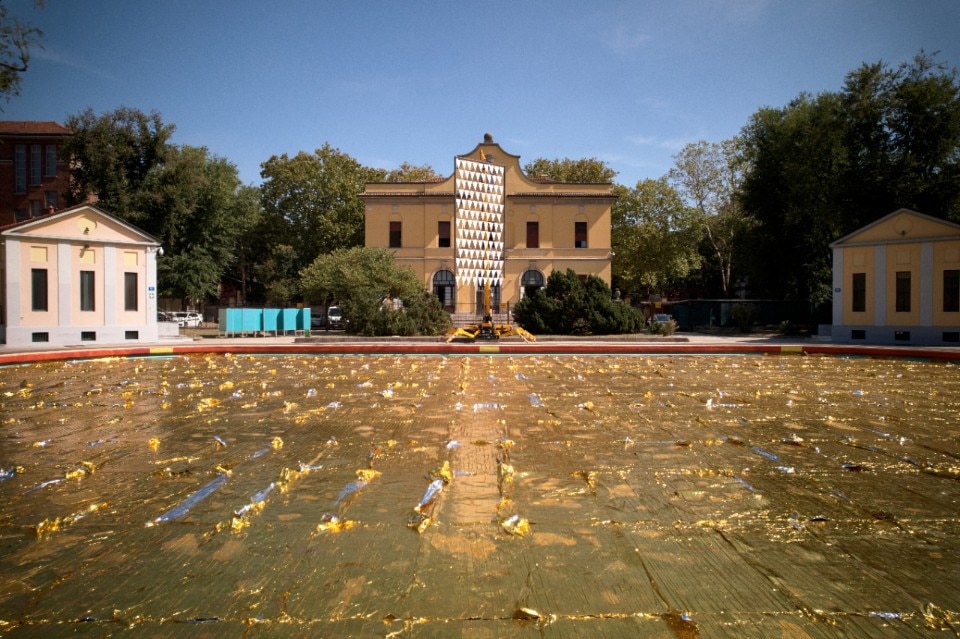
Gilded Darkness, Nari Ward, Fondazione Trussardi, 2022
Emergence Pool
Photo Marco De Scalzi
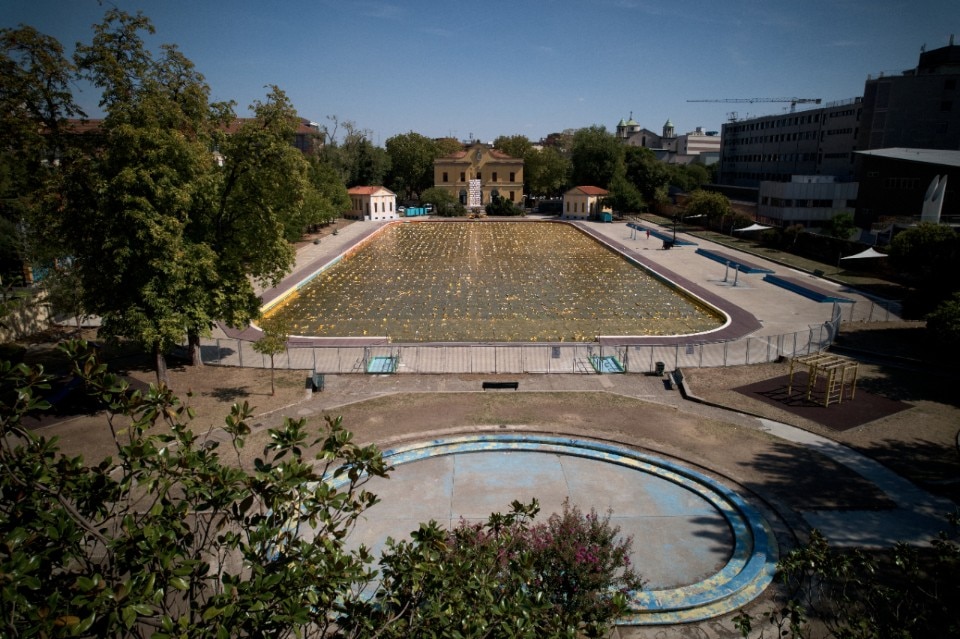
Gilded Darkness, Nari Ward, Fondazione Trussardi, 2022
Emergence Pool
Photo Marco De Scalzi
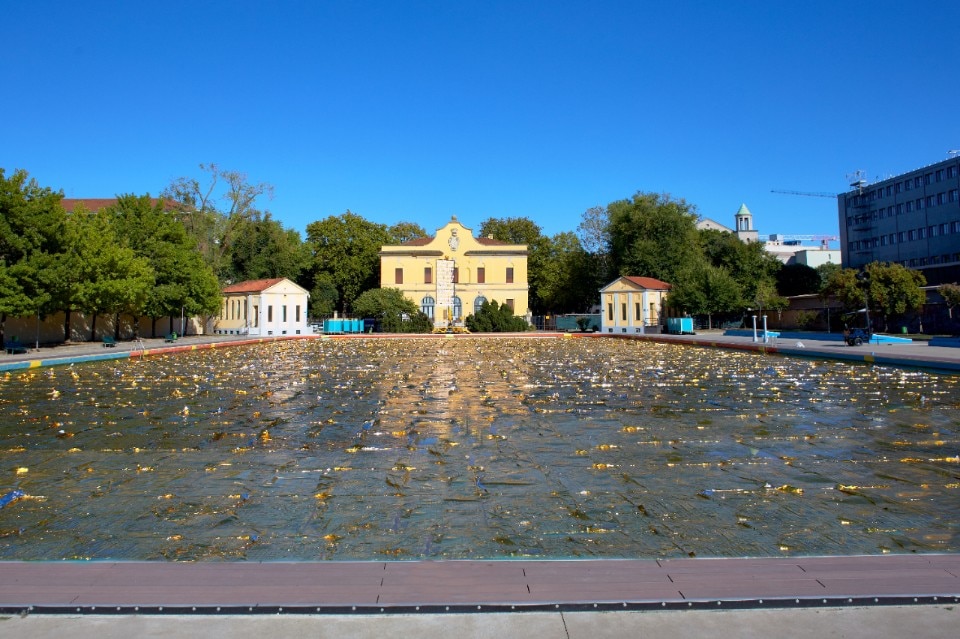
Gilded Darkness, Nari Ward, Fondazione Trussardi, 2022
Emergence Pool
Photo Marco De Scalzi
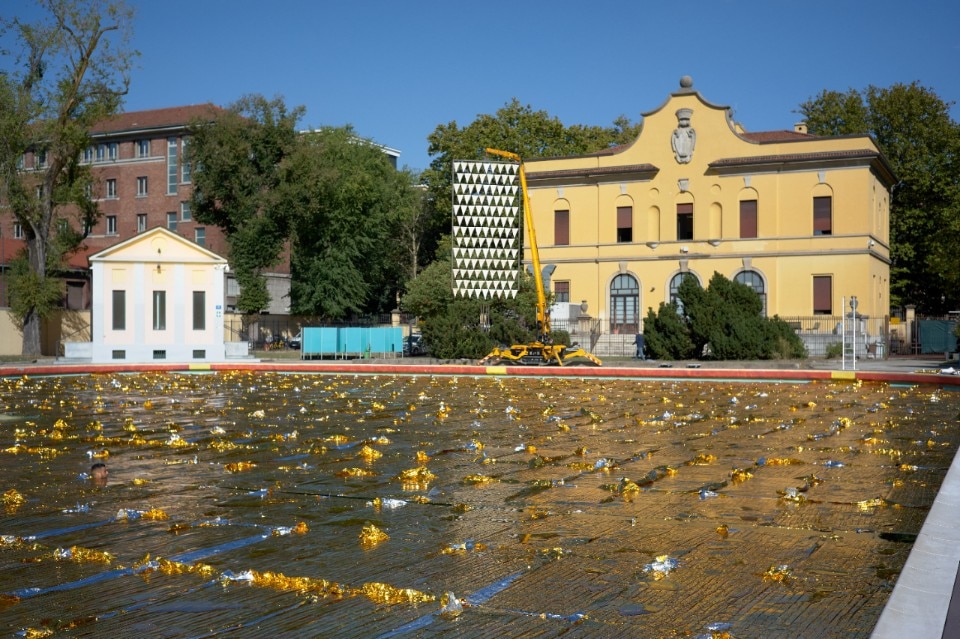
Gilded Darkness, Nari Ward, Fondazione Trussardi, 2022
Emergence Pool
Photo Marco De Scalzi
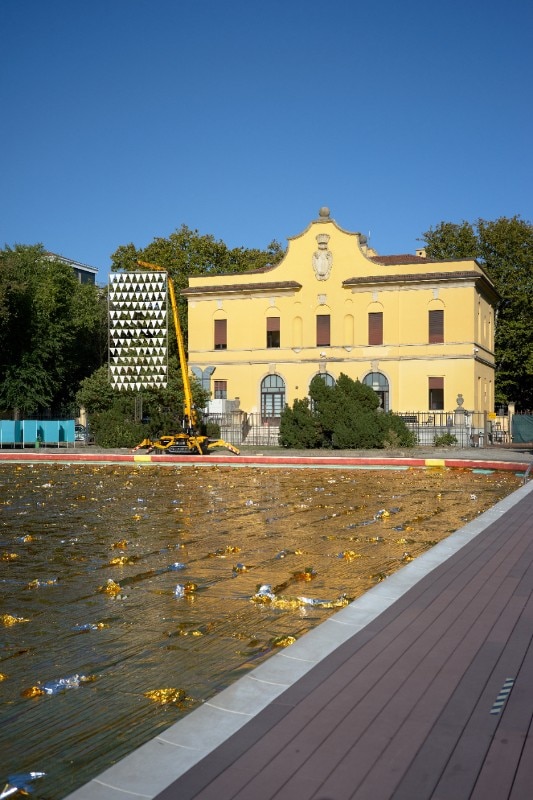
Gilded Darkness, Nari Ward, Fondazione Trussardi, 2022
Emergence Pool
Photo Marco De Scalzi
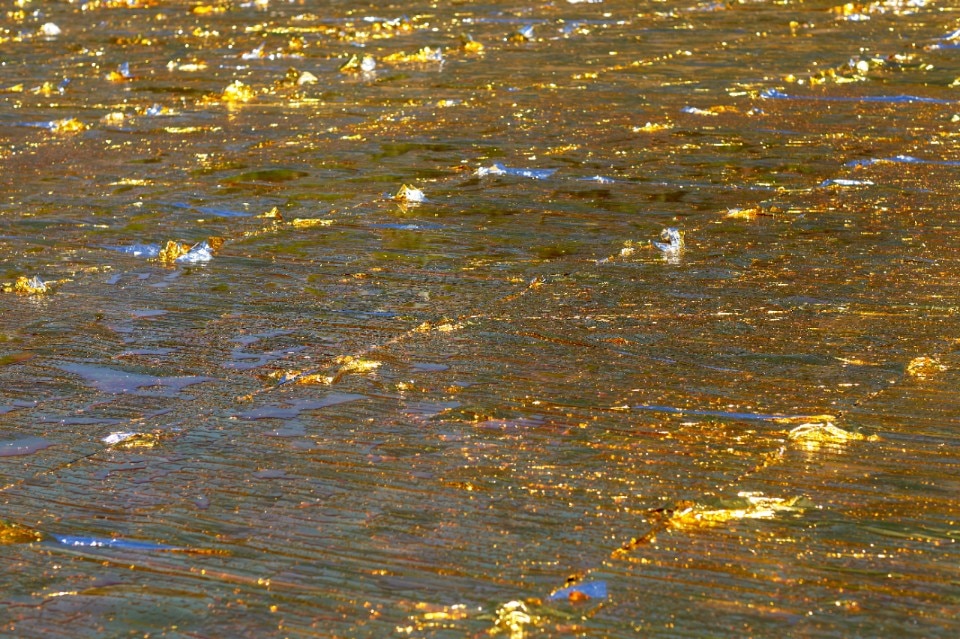
Gilded Darkness, Nari Ward, Fondazione Trussardi, 2022
Emergence Pool
Photo Marco De Scalzi
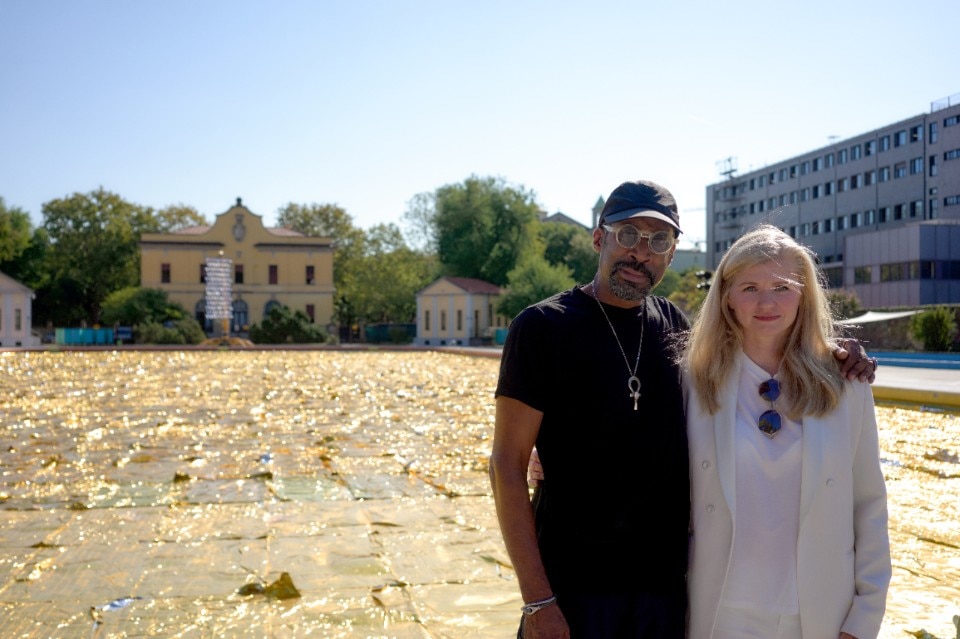
Gilded Darkness, Nari Ward, Fondazione Trussardi, 2022
Nari Ward and Beatrice Trussardi
Photo Marco De Scalzi
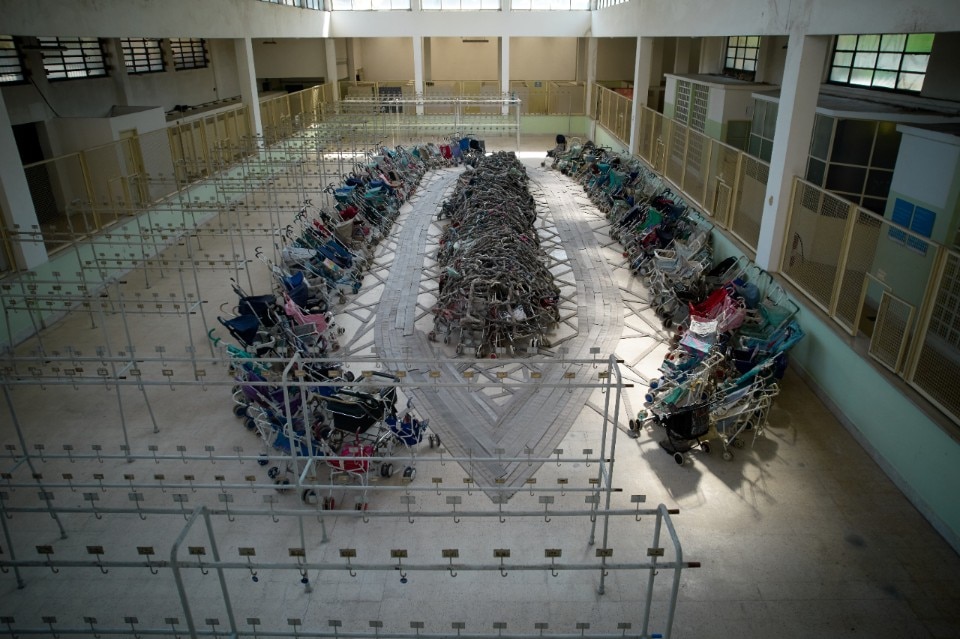
Gilded Darkness, Nari Ward, Fondazione Trussardi, 2022
Amazing Grace
Photo Marco De Scalzi
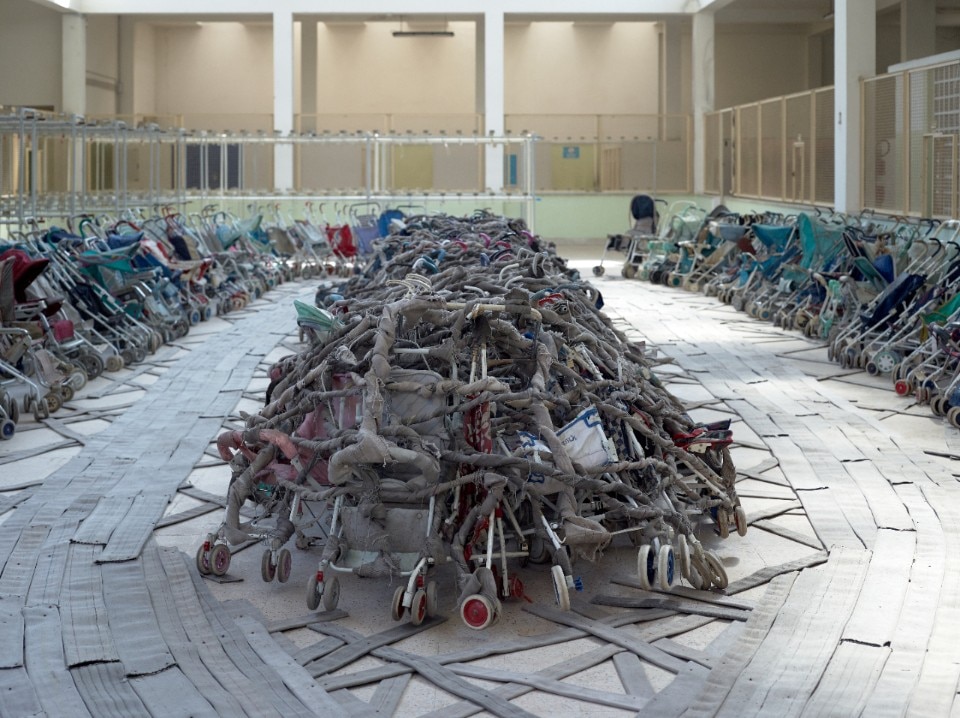
Gilded Darkness, Nari Ward, Fondazione Trussardi, 2022
Amazing Grace
Photo Marco De Scalzi
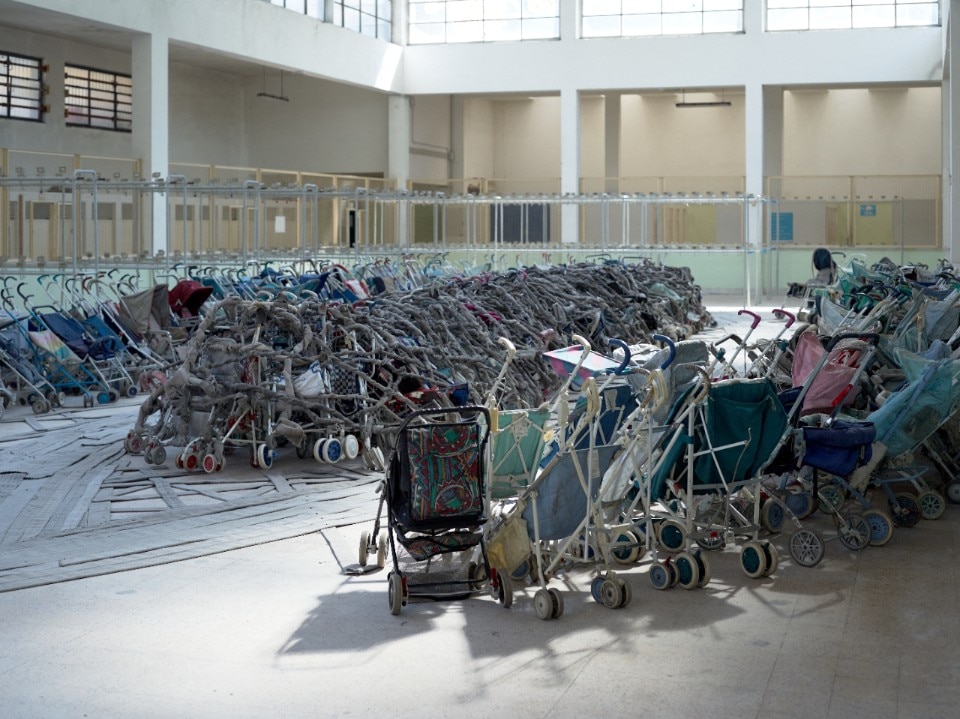
Gilded Darkness, Nari Ward, Fondazione Trussardi, 2022
Amazing Grace
Photo Marco De Scalzi
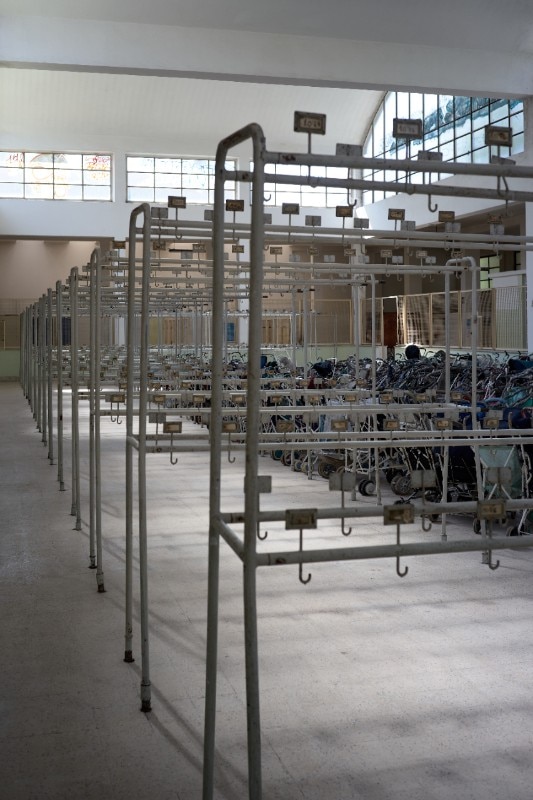
Gilded Darkness, Nari Ward, Fondazione Trussardi, 2022
Amazing Grace
Photo Marco De Scalzi
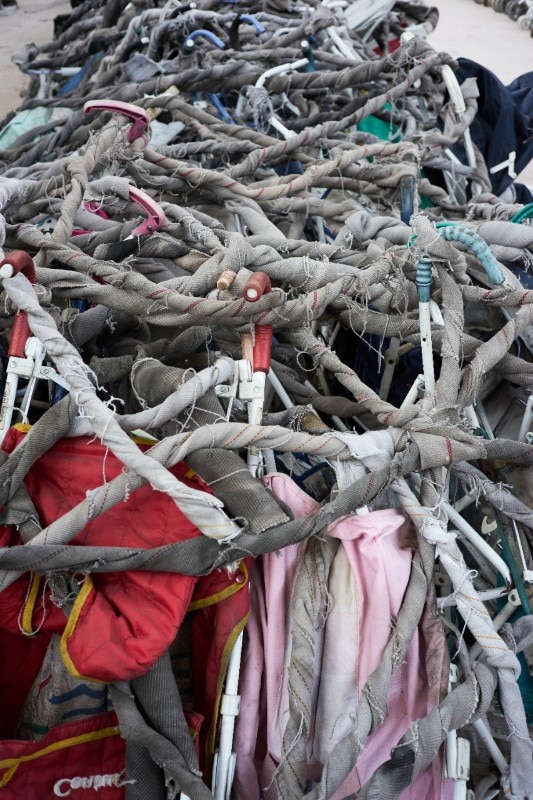
Gilded Darkness, Nari Ward, Fondazione Trussardi, 2022
Amazing Grace
Photo Marco De Scalzi
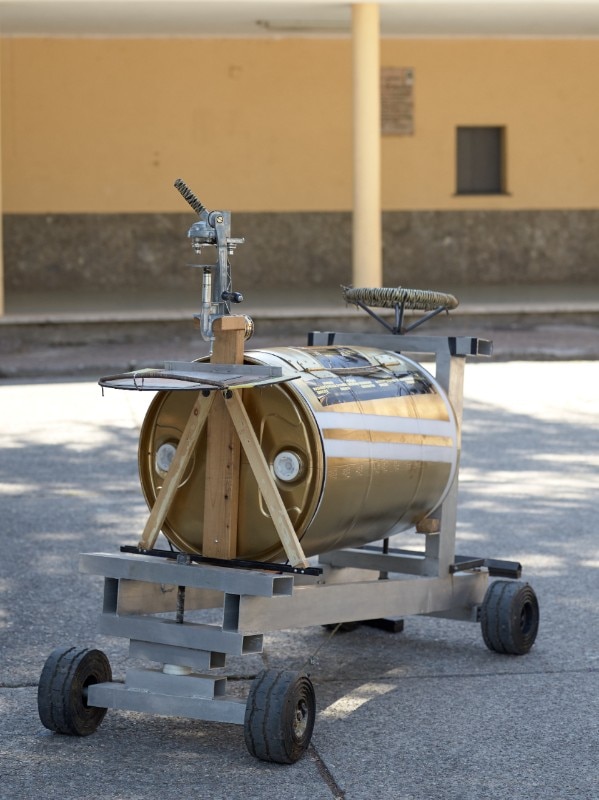
Gilded Darkness, Nari Ward, Fondazione Trussardi, 2022
Radiant Smiles
Photo Marco De Scalzi
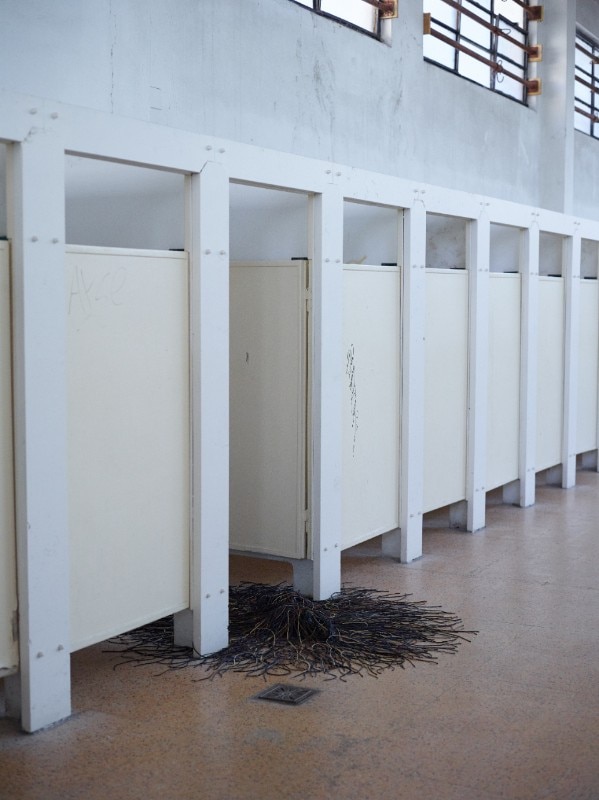
Gilded Darkness, Nari Ward, Fondazione Trussardi, 2022
Gifted Witness
Photo Marco De Scalzi
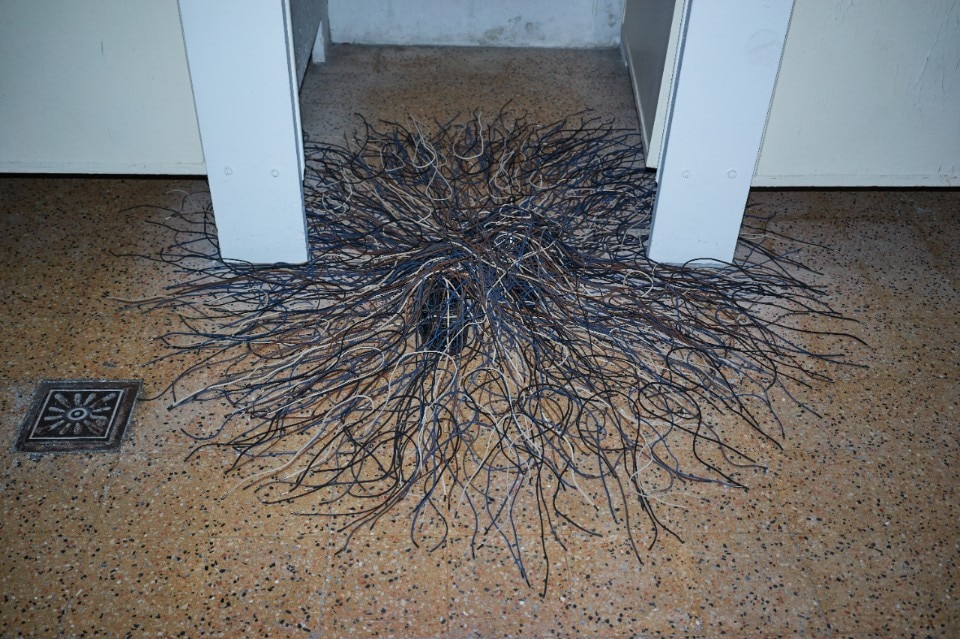
Gilded Darkness, Nari Ward, Fondazione Trussardi, 2022
Gifted Witness
Photo Marco De Scalzi
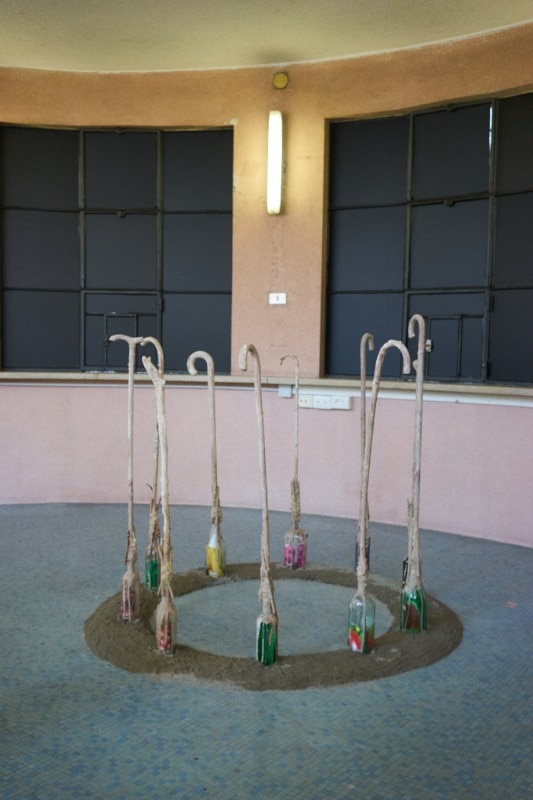
Gilded Darkness, Nari Ward, Fondazione Trussardi, 2022
Stroller Sprouts
Photo Marco De Scalzi

Gilded Darkness, Nari Ward, Fondazione Trussardi, 2022
Emergence Pool
Photo Marco De Scalzi

Gilded Darkness, Nari Ward, Fondazione Trussardi, 2022
Emergence Pool
Photo Marco De Scalzi

Gilded Darkness, Nari Ward, Fondazione Trussardi, 2022
Emergence Pool
Photo Marco De Scalzi

Gilded Darkness, Nari Ward, Fondazione Trussardi, 2022
Emergence Pool
Photo Marco De Scalzi

Gilded Darkness, Nari Ward, Fondazione Trussardi, 2022
Emergence Pool
Photo Marco De Scalzi

Gilded Darkness, Nari Ward, Fondazione Trussardi, 2022
Emergence Pool
Photo Marco De Scalzi

Gilded Darkness, Nari Ward, Fondazione Trussardi, 2022
Emergence Pool
Photo Marco De Scalzi

Gilded Darkness, Nari Ward, Fondazione Trussardi, 2022
Emergence Pool
Photo Marco De Scalzi

Gilded Darkness, Nari Ward, Fondazione Trussardi, 2022
Emergence Pool
Photo Marco De Scalzi

Gilded Darkness, Nari Ward, Fondazione Trussardi, 2022
Nari Ward and Beatrice Trussardi
Photo Marco De Scalzi

Gilded Darkness, Nari Ward, Fondazione Trussardi, 2022
Amazing Grace
Photo Marco De Scalzi

Gilded Darkness, Nari Ward, Fondazione Trussardi, 2022
Amazing Grace
Photo Marco De Scalzi

Gilded Darkness, Nari Ward, Fondazione Trussardi, 2022
Amazing Grace
Photo Marco De Scalzi

Gilded Darkness, Nari Ward, Fondazione Trussardi, 2022
Amazing Grace
Photo Marco De Scalzi

Gilded Darkness, Nari Ward, Fondazione Trussardi, 2022
Amazing Grace
Photo Marco De Scalzi

Gilded Darkness, Nari Ward, Fondazione Trussardi, 2022
Radiant Smiles
Photo Marco De Scalzi

Gilded Darkness, Nari Ward, Fondazione Trussardi, 2022
Gifted Witness
Photo Marco De Scalzi

Gilded Darkness, Nari Ward, Fondazione Trussardi, 2022
Gifted Witness
Photo Marco De Scalzi

Gilded Darkness, Nari Ward, Fondazione Trussardi, 2022
Stroller Sprouts
Photo Marco De Scalzi
Opened in 1929 in what we now call the Città Studi district, the Guido Romano pool can be defined as an architectural – albeit aquatic – park. Originally part of a larger modernization strategies for the city, as part of the “Casa del Sole” school park, the site evolved around two pools: a large rectangle for adults and a smaller circle for children. Surrounding the water are the scenographic forms of the original main building (now a local police station), two auxiliary pavilions showing columns and pediments, and a series of low service blocks that used to blend pergolas, arcades, and horizontal windows. The evocative landscape has inspired site-specific installations, such as Nari Ward’s 2022 field of reflective blankets.
5. Monte Stella and QT8
Quartiere Triennale ottava (Qt8), Piero Bottoni, 1947
Municipio 8, Milan, Italy
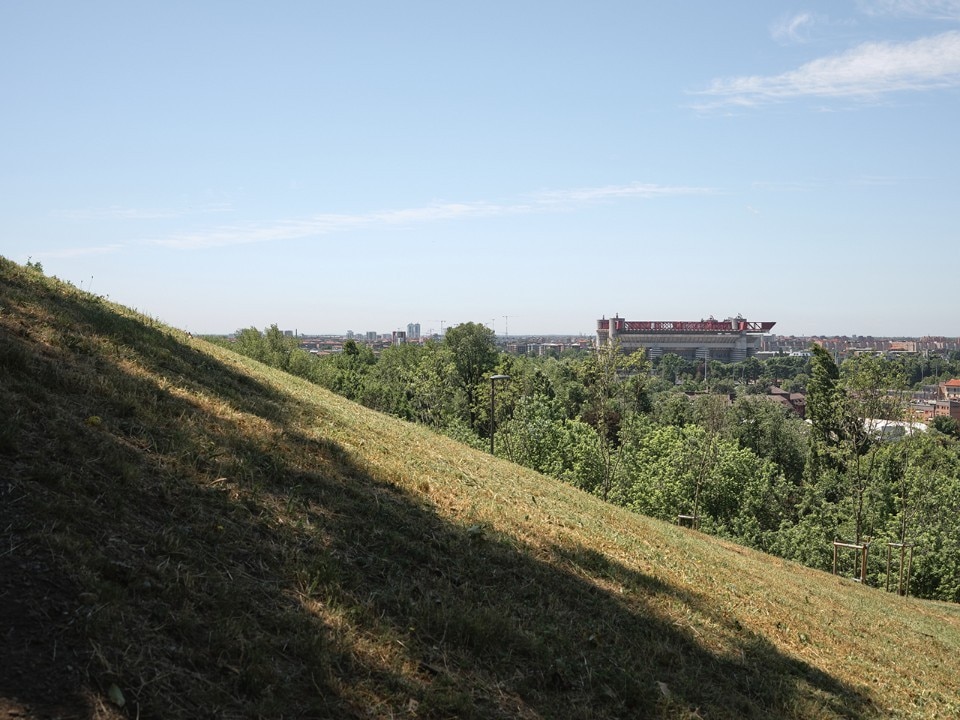
Rising 45 meters, Monte Stella was created in the late 1940s using rubble from World War II bombings and the final demolitions of Milan’s Spanish bastions. Located near San Siro, it remains a unique green landmark in a mostly flat city – first remarkable slopes can be found only in the vast Parco Nord. From its summit, one can take in views of the stadium, the CityLife towers, the Duomo, the Velasca, and Porta Nuova. Nearby lies the QT8 (Quartiere Triennale Ottava, or Quartiere Sperimentale della Triennale di Milano, the Triennale’s Experimental Neighborhood), developed from 1945 to 1954 under the direction of Piero Bottoni. Monte Stella was part of this visionary district, which served as a living lab for future-oriented housing experiments – among long residential blocks and clusters of minimal homes – where then-future Milan was imagined and tested.
6. Casa a tre cilindri (“Three-Cylinder” House)
Angelo Mangiarotti and Bruno Morassutti, 1959-1962
Via Gavirate, 27, Milan, Italy
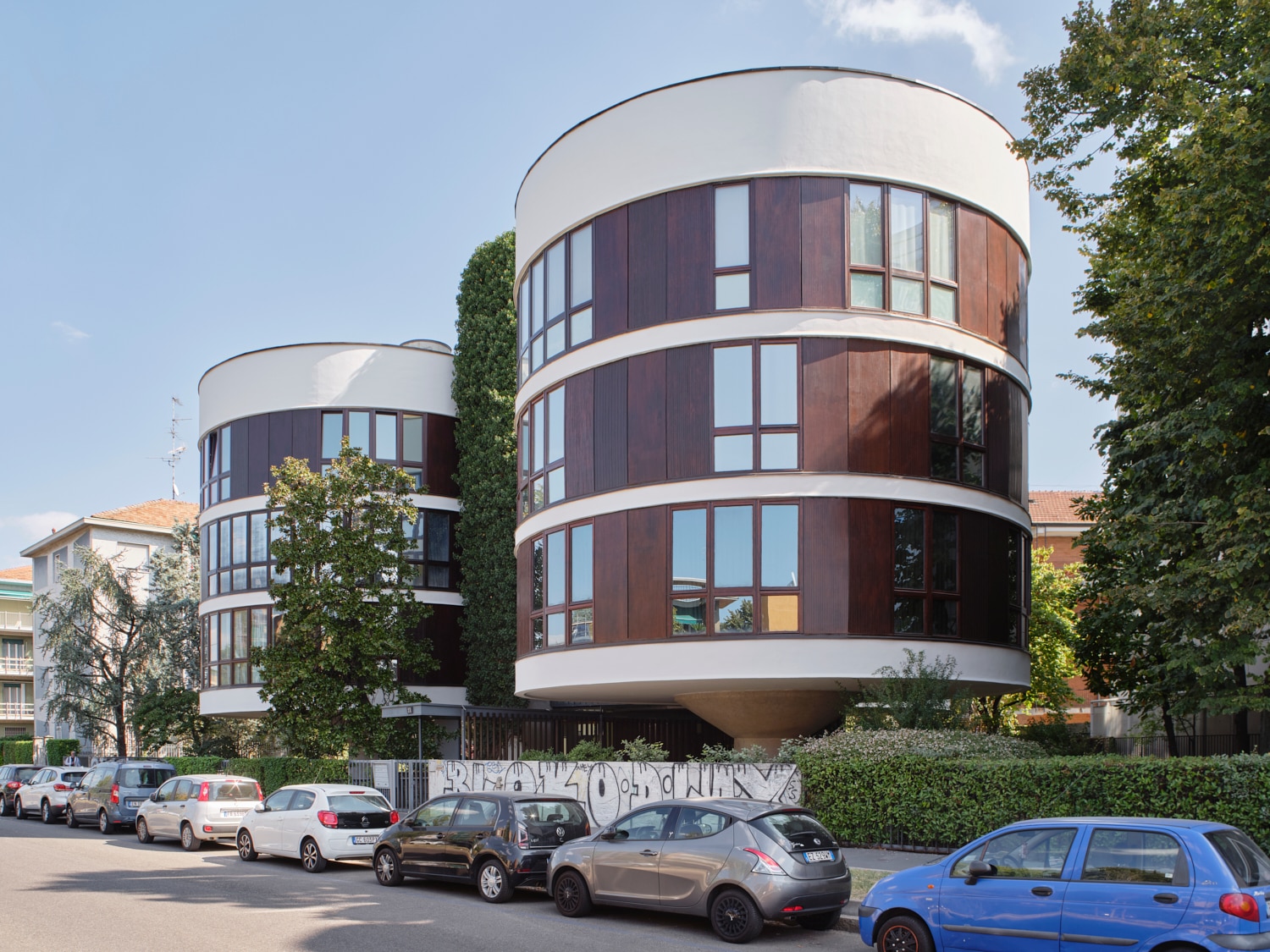
 View gallery
View gallery

Angelo Mangiarotti and Bruno Morassutti
House 3 Cilindri, Milan, 1956-61
Photo Marco Menghi
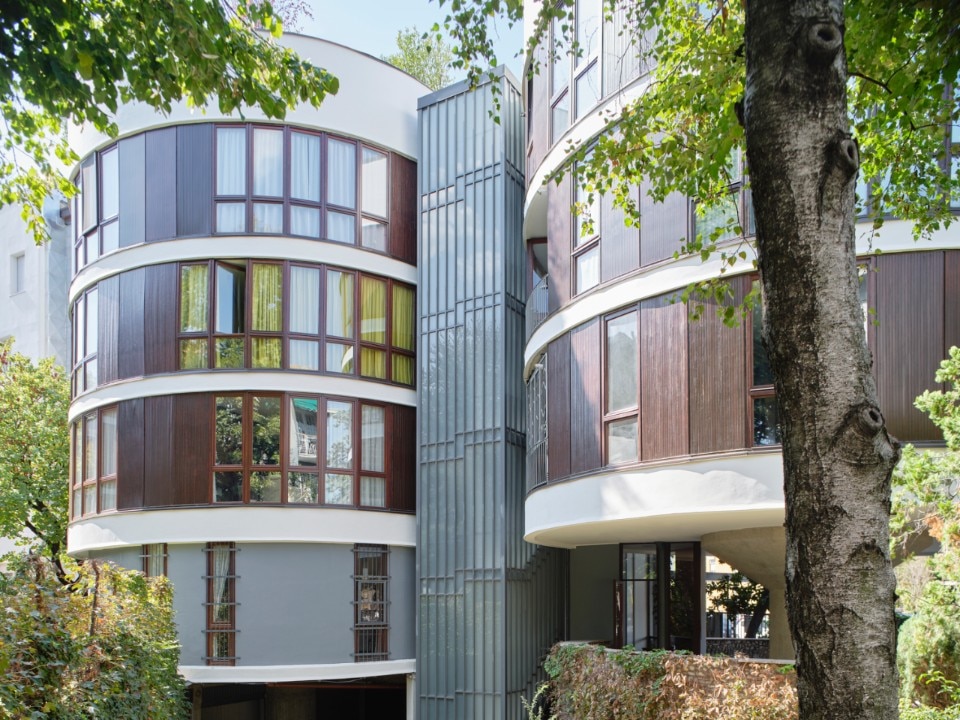
Angelo Mangiarotti and Bruno Morassutti
House 3 Cilindri, Milan, 1956-61
Photo Marco Menghi
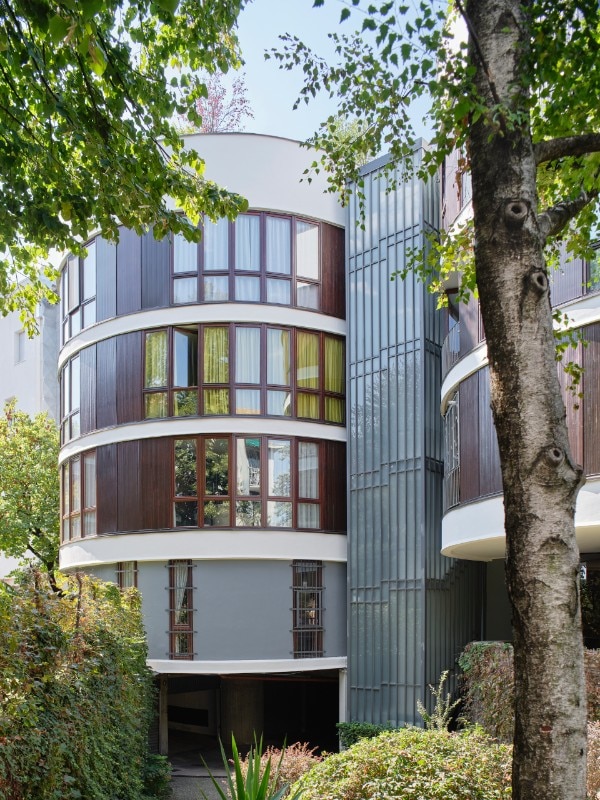
Angelo Mangiarotti and Bruno Morassutti
House 3 Cilindri, Milan, 1956-61
Photo Marco Menghi
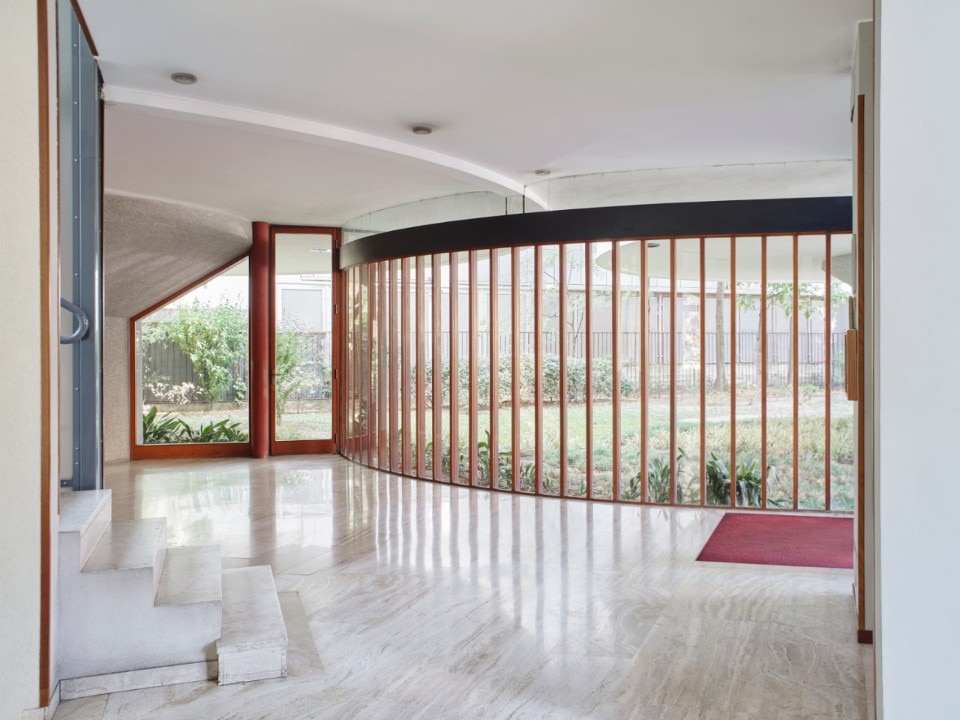
Angelo Mangiarotti and Bruno Morassutti
House 3 Cilindri, Milan, 1956-61
Photo Marco Menghi
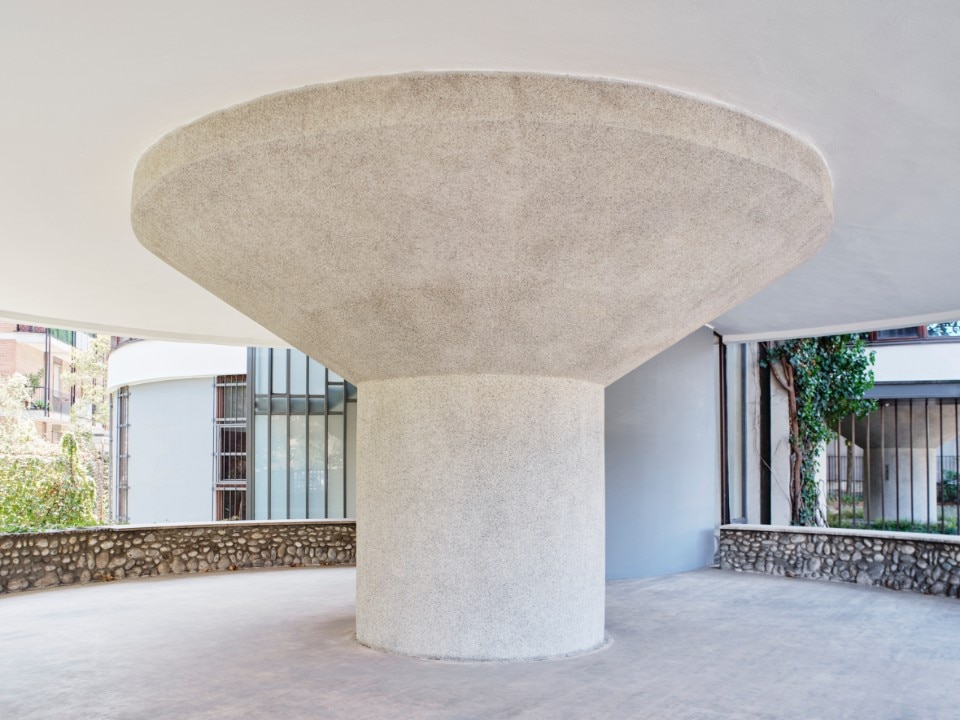
Angelo Mangiarotti and Bruno Morassutti
House 3 Cilindri, Milan, 1956-61
Photo Marco Menghi
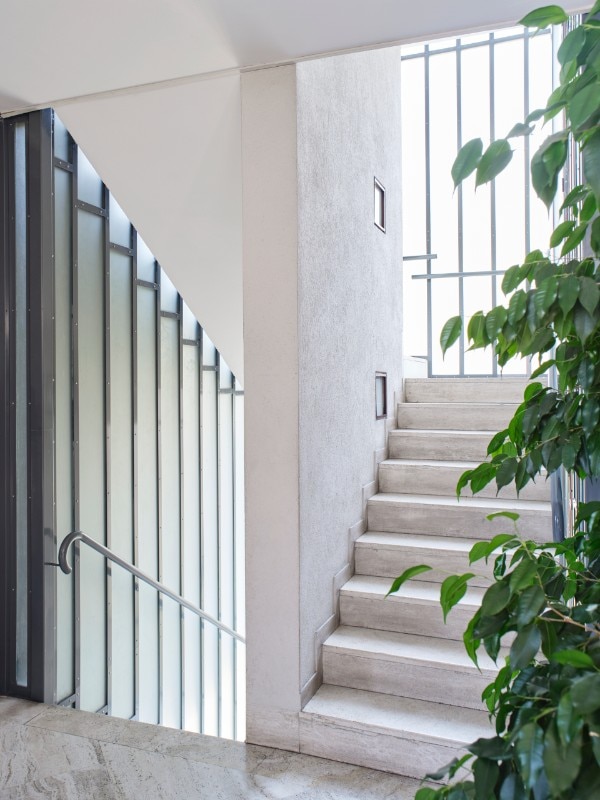
Angelo Mangiarotti and Bruno Morassutti
House 3 Cilindri, Milan, 1956-61
Photo Marco Menghi
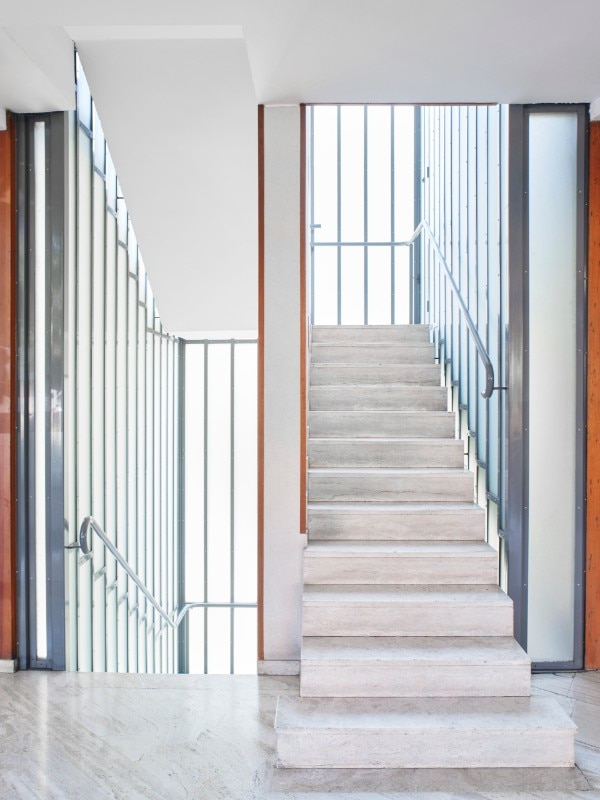
Angelo Mangiarotti and Bruno Morassutti
House 3 Cilindri, Milan, 1956-61
Photo Marco Menghi

Angelo Mangiarotti and Bruno Morassutti
House 3 Cilindri, Milan, 1956-61
Photo Marco Menghi

Angelo Mangiarotti and Bruno Morassutti
House 3 Cilindri, Milan, 1956-61
Photo Marco Menghi

Angelo Mangiarotti and Bruno Morassutti
House 3 Cilindri, Milan, 1956-61
Photo Marco Menghi

Angelo Mangiarotti and Bruno Morassutti
House 3 Cilindri, Milan, 1956-61
Photo Marco Menghi

Angelo Mangiarotti and Bruno Morassutti
House 3 Cilindri, Milan, 1956-61
Photo Marco Menghi

Angelo Mangiarotti and Bruno Morassutti
House 3 Cilindri, Milan, 1956-61
Photo Marco Menghi

Angelo Mangiarotti and Bruno Morassutti
House 3 Cilindri, Milan, 1956-61
Photo Marco Menghi
A small typological revolution: three cylindrical volumes, each three stories tall, suspended on a single “mushroom” pillar and located in a garden neighborhood near San Siro stadium. At ground level, shared green space flows beneath the cylinders and reappears on the rooftop terraces. Services are concentrated in a central core, while the structural concept allows for maximum flexibility in both interior layouts and facades. Each apartment – occupying one of the three circular surfaces per floor – is supported by a single large, hollow, traversable column at its core, from which the domestic space radiates outward, supported by cantilevered slabs in pre-stressed reinforced concrete.
7. Monte Amiata Housing Complex, Gallaratese District
Carlo Aymonino and Aldo Rossi, 1967 -1974
Via Enrico Falck, 53, Municipio 8, Milan, Italy
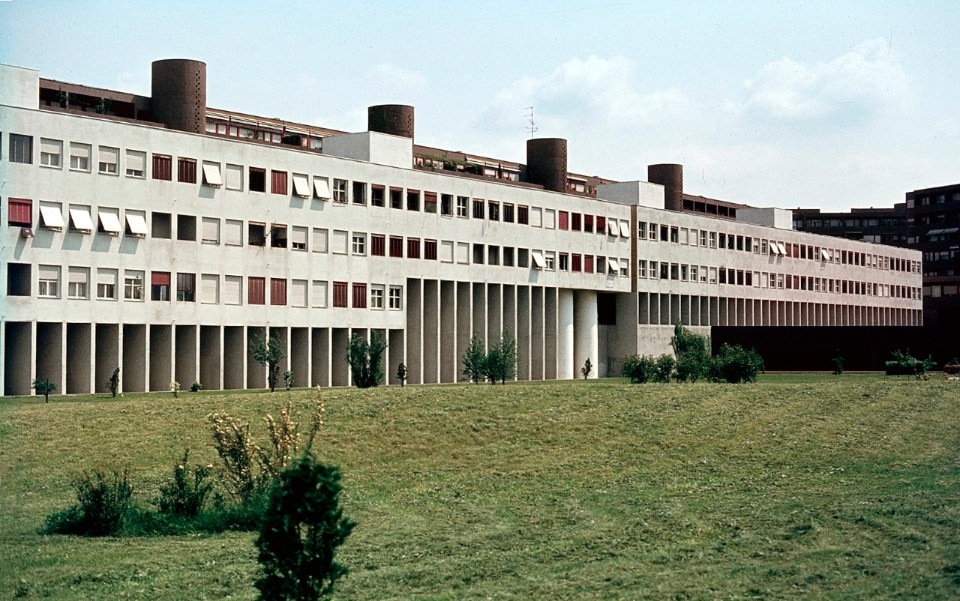
In the mid-1960s, Aymonino was tasked with creating a masterplan for a new public housing district. He made two bold choices: to ignore the existing urban context, which he deemed of little quality, and to invite Aldo Rossi to design one of the five planned buildings. The result was a cluster of residences, commercial spaces, and services that became a cultural landmark in both Italian and international architecture of after-Modern years. The taller, red-toned buildings – with their complex, sculptural shapes – unfold around a famous open-air amphitheater and two triangular piazzas. Alongside them stands the long, three-story porticoed block, one of Rossi’s most renowned works.
8. Marchiondi Spagliardi Institute
Vittoriano Viganò, 1957
Via Noale 1, Milan, Italy
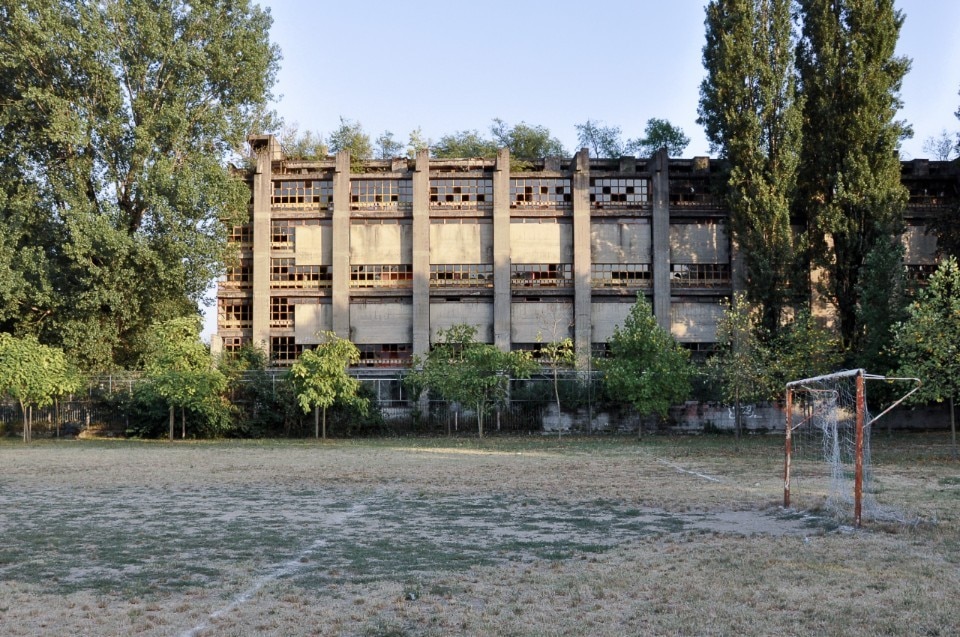
Built on the far western edge of Milan, this facility was originally intended for young people with special educational needs. The Marchiondi Institute has since become a symbol of Italian Brutalism, encapsulating its essential source codes: raw formal elements, with exposed concrete and steel; a strong social mission (it was neither reformatory nor orphanage, but a place for holistic education); and the controversy surrounding a bold architectural language, brutalism, that was often misunderstood or criticized – at least until its recent aesthetic revival. The building has in fact been abandoned for years.
9. Church of San Giovanni in Bono
Arrigo Arrighetti, 1968
Via S. Paolino, 20, Milan, Italy
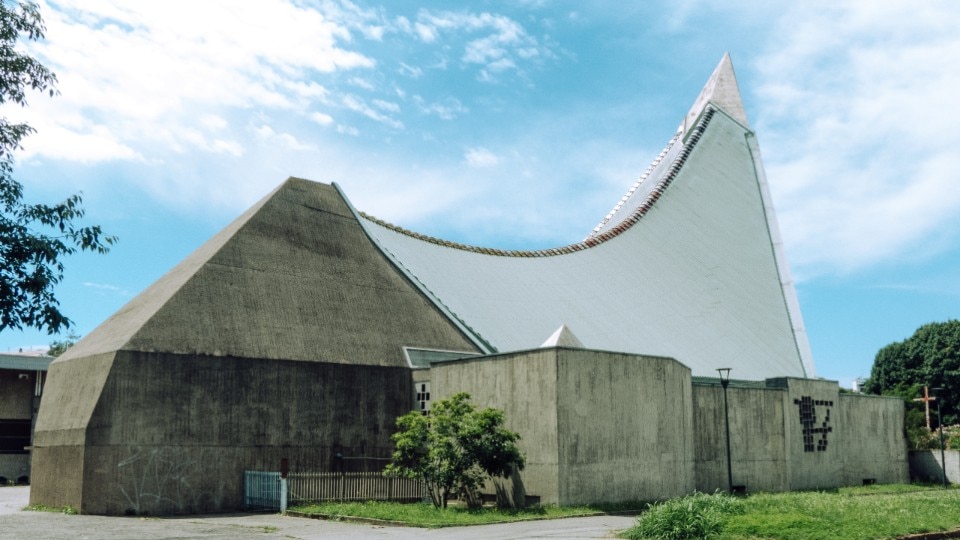
Arrigo Arrighetti, through his extensive work for the Municipality of Milan, can truly be seen as a civil servant of design. Many of his works are Milan’s “incognito icons”: one, the modernist tower in Largo Treves in the heart of Brera, was recently demolished; another, the Sormani Library, has been a life companion for generations of students and citizens. Then comes San Giovanni Bono. At the heart of a public housing complex that he also designed, Arrighetti placed a church with a radical aesthetic: its most striking feature is a great concrete sail springing from the front square, pierced with multicolored glass insets, while the interior is shaped by the interlocking of three distinct liturgical spaces.
10. Abbey of Chiaravalle
Francesco Pecorari, Bramante, 1135-1221
Via Sant'Arialdo, 102, Milan, Italy
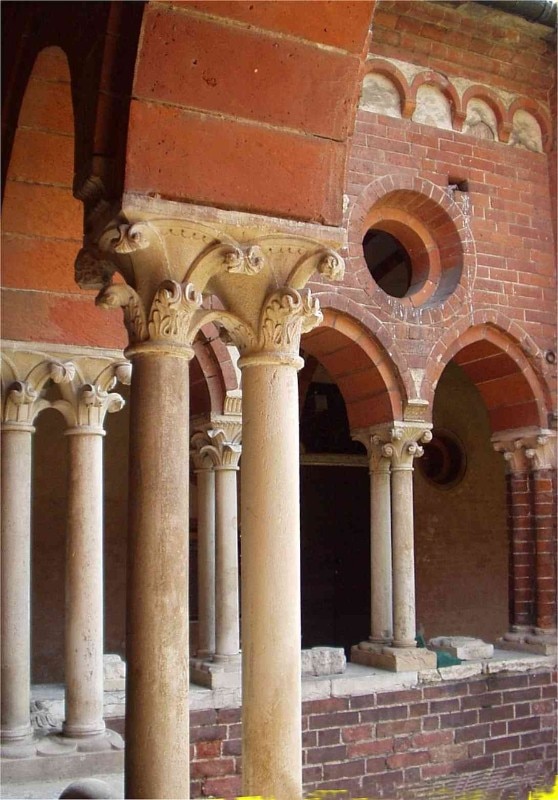
Bernard of Clairvaux (Chiaravalle, in fact) founded it in 1135, outside the Porta Romana gate, on the road leading to Rome, marking today the beginning of the Autostrada del Sole, surrounded by the countless chapters of the modern Milan’s industrial sprawl – Metanopoli, the historic ENI company town, is in front of the abbey – is in fact the road that leads to Rome. The history of the abbey is long and troubled by the dark periods of religion and power struggles, but it is inseparable from the landscape of the Lombard countryside, as well as that of medieval and modern Europe. At its peak, it housed 80 monks. The bell tower standing out among the fields came between the 14th and 15th century, (“Ciribiciaccola” they call it, perhaps from the sounds of storks that used to nest there?) so similar to those in Cremona, anticipating the shapes conceived in Milan by Bramante, who would pass, however, through the abbey to paint a Christ at the column.
Opening image: Arrigo Arrighetti, Church of San Giovanni in Bono, 1968. Photo Marco Menghi


